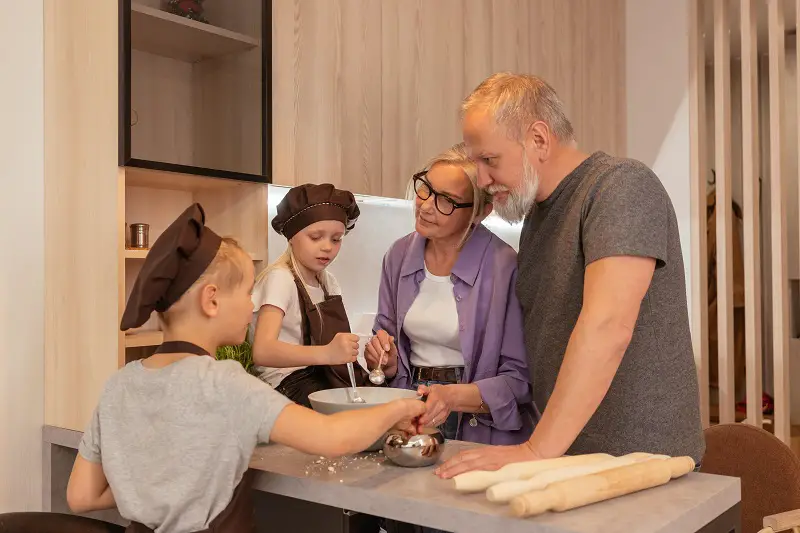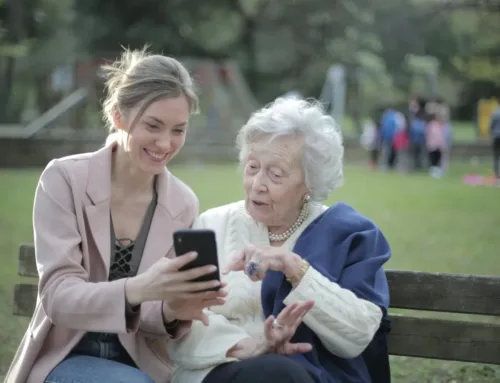Hospice care nurses represent a special branch of healthcare professionals dedicated to providing comfort, dignity, and quality of life to individuals facing terminal illness. Unlike traditional nursing roles focused on curative treatments, hospice nurses specialize in palliative care—the compassionate management of symptoms when cure is no longer possible or desired. These highly skilled registered nurses combine clinical expertise with the necessary empathy to support patients and families through one of life’s most challenging journeys.
The Core Philosophy of Hospice Nursing
The foundation of hospice nursing rests on the belief that everyone deserves to live their final days with comfort, dignity, and quality of life. When curative treatments are no longer effective or aligned with a patient’s wishes, hospice care steps in to provide specialized support focusing on physical comfort, emotional well-being, and spiritual peace.
Hospice care nurses embody this philosophy by:
– Prioritizing comfort and symptom management over curative interventions
– Treating the whole person—addressing physical, emotional, social, and spiritual needs
– Supporting not just the patient but the entire family unit
– Honoring each individual’s values, beliefs, and wishes regarding end-of-life care
– Affirming life while neither hastening nor postponing death
This holistic approach distinguishes hospice nursing from other healthcare specialties and requires a unique skill set that blends clinical expertise with compassionate human connection.
Multifaceted Roles and Responsibilities
Hospice care nurses perform diverse responsibilities that extend far beyond traditional medical care. Their day-to-day duties encompass various aspects of patient and family support:
Medical Care and Symptom Management
At the core of hospice nursing is expert symptom management to ensure patient comfort. This includes:
– Conducting comprehensive assessments of the patient’s condition
– Monitoring vital signs and tracking disease progression
– Administering medications for pain, nausea, anxiety, and other symptoms
– Providing wound care and other clinical interventions
– Recognizing and responding to changes in the patient’s condition
– Collaborating with physicians to adjust care plans as needed
Hospice nurses are particularly skilled in pain management, often working with higher doses of pain medications than typically seen in other healthcare settings, with the primary goal of keeping patients comfortable without concerns about dependence.
Patient and Family Education
Empowering patients and families through education is a crucial aspect of hospice nursing:
– Teaching family caregivers about medication administration and care techniques
– Explaining disease progression and what physical changes to expect
– Demonstrating how to use medical equipment properly
– Providing guidance on when to contact the hospice team for additional support
– Helping families understand the signs and symptoms of approaching death
This education reduces anxiety and enables families to participate actively in providing care for their loved ones.
Emotional, Psychosocial, and Spiritual Support
Terminal illness brings immense emotional challenges for both patients and families:
– Offering a compassionate, listening presence during difficult conversations
– Providing emotional support as patients process end-of-life issues
– Creating space for patients to express fears, hopes, and wishes
– Supporting families through anticipatory grief
– Helping patients find meaning and closure in their final days
– Facilitating connections with spiritual care providers based on individual beliefs
While not therapists, hospice nurses develop strong therapeutic relationships that help navigate the emotional landscape of dying and loss.
Coordination and Collaboration
Hospice care operates on an interdisciplinary team model, with the nurse often serving as the central coordinator:
– Collaborating with physicians, social workers, chaplains, aides, and volunteers
– Ensuring seamless communication among all team members
– Coordinating care plan meetings and updates
– Managing transitions between care settings when needed
– Serving as the main point of contact for many families
This coordination ensures comprehensive care that addresses all dimensions of the end-of-life experience.
Advocacy
Hospice nurses are powerful advocates for their patients’ wishes:
– Ensuring the patient’s voice is heard and respected
– Supporting advance care planning and honoring advance directives
– Advocating for appropriate pain management
– Protecting patient dignity and autonomy
– Mediating between family members when conflicts arise about care decisions
This advocacy ensures that the patient’s preferences remain at the center of all care decisions.
Specialized Roles Within Hospice Nursing
The field of hospice nursing includes several specialized roles that address specific aspects of care:
1. Admission Nurses: Conduct initial assessments, explain hospice services, and develop preliminary care plans when patients first enter hospice care.
2. Visit Nurses: Provide routine care during scheduled home visits or in facility settings.
3. Triage Nurses: Handle urgent situations, often providing guidance over the phone or making emergency visits outside regular hours.
4. Liaison Nurses: Facilitate communication between healthcare settings, particularly during transitions from hospital to hospice.
5. Case Managers (RN Case Managers): Serve as the primary nurse for specific patients, managing the overall care plan and coordinating team efforts.
6. Consultative Hospice Nurses: Provide palliative care expertise in general hospital settings, helping to integrate comfort-focused care earlier in a patient’s journey.
These specialized roles allow hospice nurses to apply their skills in different contexts while maintaining the core focus on compassionate end-of-life care.
Essential Skills and Characteristics
Successful hospice nurses possess a unique combination of clinical expertise and interpersonal qualities:
Clinical Skills
– Expert pain and symptom assessment and management
– Proficiency in medication administration through various routes
– Strong assessment skills to detect subtle changes in condition
– Knowledge of disease processes and end-of-life trajectories
– Ability to manage complex medical situations in home settings
– Understanding of the physical signs of approaching death
Personal Qualities
– Compassion and Empathy: The ability to connect deeply with patients and families during vulnerable times
– Excellent Communication: Skills to discuss sensitive topics with clarity and compassion
– Emotional Resilience: Capacity to manage the emotional toll of regular exposure to death and grief
– Flexibility and Adaptability: Readiness to adjust to unpredictable situations and changing needs
– Cultural Sensitivity: Respect for diverse beliefs and practices surrounding death and dying
– Patience: Allowing space and time for patients and families to process difficult realities
– Self-Awareness: Understanding one’s own emotions and practicing effective self-care
These combined skills enable hospice nurses to provide both technical expertise and heartfelt human connection during life’s final chapter.
The Hospice Care Team: A Collaborative Approach
Hospice nurses work as part of a comprehensive team dedicated to meeting all aspects of patient and family needs:
– Hospice Physicians: Oversee medical care, prescribe medications, and certify hospice eligibility
– Social Workers: Address emotional needs, practical concerns, and connect families with resources
– Chaplains/Spiritual Counselors: Provide spiritual support aligned with the patient’s beliefs
– Certified Nursing Assistants (CNAs): Offer help with personal care, hygiene, and mobility
– Volunteers: Provide companionship and respite for caregivers
– Therapists: Offer complementary approaches like music or massage therapy
– Bereavement Coordinators: Support families through the grief process after death
The hospice nurse often serves as the linchpin of this team, ensuring coordinated care delivery and seamless communication among all members. This collaborative approach allows for truly holistic support addressing physical, emotional, social, and spiritual dimensions of care.
Education Path and Certification
Becoming a hospice care nurse requires specific education, experience, and often specialized certification:
Educational Requirements
1. Basic Education: Obtain an Associate Degree in Nursing (ADN) or Bachelor of Science in Nursing (BSN) from an accredited program. Many employers prefer BSN-prepared nurses, especially for leadership positions.
2. Licensure: Pass the National Council Licensure Examination (NCLEX-RN) to become a licensed registered nurse.
3. Clinical Experience: Gain 1-2 years of experience in relevant areas such as medical-surgical, oncology, or palliative care. This foundation builds essential clinical skills before specializing.
Certification Options
While not always mandatory, specialized certification demonstrates commitment and expertise:
– Certified Hospice and Palliative Nurse (CHPN): The most common certification for hospice RNs, offered by the National Board for Certification of Hospice and Palliative Care Nurses (NBCHPN).
– Advanced Certified Hospice and Palliative Nurse (ACHPN): Available for advanced practice nurses working in hospice and palliative care.
Certification typically requires verified clinical hours in hospice/palliative care and passing a comprehensive examination. Most certifications require renewal every 3-4 years through continuing education or re-examination.
Continuing Education
The field of end-of-life care continually evolves, making ongoing education essential. Hospice nurses pursue continuing education in areas such as:
– Advanced pain management techniques
– Grief support strategies
– Cultural competence in end-of-life care
– Ethical considerations in terminal care
– Specialized symptom management for different conditions
This commitment to learning ensures hospice nurses provide the most current, evidence-based care throughout their careers.
Work Environment and Settings
Hospice nurses practice in diverse settings, bringing compassionate care wherever the patient calls home:
– Private Residences: Many hospice patients receive care in their own homes, with nurses making scheduled visits.
– Assisted Living and Nursing Facilities: Hospice nurses collaborate with facility staff to provide specialized end-of-life care.
– Inpatient Hospice Units: Dedicated facilities for patients needing more intensive symptom management or when home care isn’t feasible.
– Hospitals: Some hospitals maintain specialized hospice units or integrate hospice services for inpatients.
The work often involves travel between locations, especially for home-based care, requiring flexibility and independence. While the physical environment varies, the hospice nurse’s focus remains consistent: creating a peaceful, comfortable space for patients to receive dignified end-of-life care.
Salary and Job Outlook
The field of hospice nursing offers competitive compensation and strong future prospects:
Salary Range
As of 2025, hospice nurses earn competitive salaries averaging between $79,000 and $83,000 annually, with variations based on:
– Geographic location (urban areas and regions with higher costs of living typically offer higher salaries)
– Education level (BSN and MSN-prepared nurses often command higher wages)
– Years of experience and specialized certification
– Type of employer (hospital-based vs. community-based hospice organizations)
Nurses in leadership positions or with advanced practice credentials can earn significantly more.
Job Growth Projections
The outlook for hospice nursing careers is exceptionally positive, driven by several factors:
– Aging population increasing demand for end-of-life care
– Growing acceptance and utilization of hospice services
– Expanded Medicare and insurance coverage for hospice care
– Increased recognition of the value of palliative approaches
This combination of factors creates substantial opportunity for those entering or advancing in hospice nursing, with growth rates exceeding average healthcare job projections.
Supporting Families Through the End-of-Life Journey
One of the most meaningful aspects of hospice nursing is guiding families through the difficult terrain of a loved one’s final days:
Educating About the Dying Process
Hospice nurses help families understand what to expect as death approaches by:
– Explaining physical changes that commonly occur
– Preparing families for changes in breathing, consciousness, and other symptoms
– Helping families recognize signs that death is near
– Providing guidance on how to offer comfort during final hours
This education helps normalize a natural but often unfamiliar process, reducing fear and anxiety for family caregivers.
Facilitating Important Conversations
Hospice nurses create space for vital discussions about:
– Advance care planning and documenting wishes
– Unfinished business and legacy work
– Family reconciliation when needed
– Saying goodbye and finding closure
These conversations often lead to profound moments of connection and peace for both patients and families.
Providing Caregiver Support
Family caregivers face immense challenges that hospice nurses help address:
– Teaching practical caregiving skills
– Arranging respite care to prevent burnout
– Offering emotional support and validation
– Connecting caregivers with support groups and resources
This support acknowledges the vital role of family caregivers while helping them sustain their own well-being throughout the caregiving journey.
Challenges and Rewards
Hospice nursing presents a unique emotional landscape with both profound difficulties and beautiful rewards:
Challenges
– Regular exposure to death and grief
– Emotional intensity of supporting patients and families in crisis
– Potential for compassion fatigue and burnout
– Complex ethical situations and moral distress
– Managing personal feelings about mortality and loss
These challenges require intentional self-care practices, professional support systems, and strong emotional boundaries.
Rewards
Despite—or perhaps because of—these challenges, hospice nursing offers uniquely meaningful rewards:
– Making a profound difference during a critical life transition
– Building deep, meaningful connections with patients and families
– Witnessing moments of peace, reconciliation, and transcendence
– Using specialized skills to relieve suffering and promote comfort
– Finding purpose in helping others through life’s most difficult journey
Many hospice nurses describe their work not just as a career but as a calling, citing the privilege of being present with patients and families during intimate and transformative moments.
Final Thoughts
Hospice care nurses occupy a special place in healthcare, combining clinical expertise with exceptional compassion to support patients and families through the end-of-life journey. Their multifaceted role encompasses symptom management, emotional support, education, coordination, and advocacy—all directed toward ensuring comfort, dignity, and quality of life when cure is no longer possible.
While the path to becoming a hospice nurse requires rigorous education, experience, and often specialized certification, the rewards of this meaningful work extend far beyond professional achievement. Hospice nurses have the privilege of making a profound difference during one of life’s most vulnerable transitions, bringing comfort and peace to patients while guiding families.
In a healthcare system often focused on cure at all costs, hospice nurses remind us of the equal importance of compassionate care, especially when cure is no longer possible.
Ensure a safe, happy home for your loved ones using the resources provided on our site. With the right information and careful consideration, you can make the best choice for your loved one’s care and well-being.




